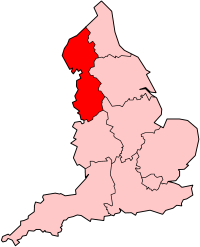energy.wikisort.org - Power_plant
The Mersey Barrage is a proposed scheme for building a tidal barrage across the Mersey Estuary.
History
The Mersey is considered one of the best sources of marine renewable energy in the United Kingdom, due to its strong current and tidal range of up to 10 m (33 ft).[1][2] The tidal range is the second highest in the United Kingdom.[3]
A Department of the Environment and UKAEA report in 1984 identified a site between New Brighton and Brocklebank Dock for a Mersey barrage.[4]
A 2006 study by Peel Holdings and the North West Development Agency identified the River Mersey as having considerable potential for tidal power. A pilot project, using a water wheel to harness tidal power, was considered at Bootle docks.[5] At the same time, a tidal barrage plan was evaluated, capable of generating 700MW.[6]
A barrage scheme was abandoned in 2011, following a study by Peel Energy and the North West Development Agency. This proposal involved constructing a barrage between Dingle and New Ferry. Although the study provided valuable insight, the preferred scheme was abandoned due to the expected lack of medium-term profitability.[7]
Steve Rotheram revived plans for a barrage as part of his 2017 election campaign.[8] The 2018 study indicated that economics were more favourable than previously, but still fell short by 20%.[9] In February 2020, following a year-long feasibility study, a tidal power proposal for the River Mersey was granted £2.5 million in funding to further develop the plan.[3][10]
Economic impact
A Mersey barrage has been predicted to be capable of producing between 1.0 and 1.5 terawatt-hours of electricity per year, which is equivalent to two thirds of Liverpool's 2017 electricity requirement.[11] One design has proposed that cross-river public transport infrastructure is included in the construction.[12]
Environmental impact
The estuary is designated as an internationally important protected area, for wading birds, ducks and fish. The Lancashire Wildlife Trust and the Cheshire Wildlife Trust are monitoring the progress of the proposals, and the potential impact on existing habitat and wildlife within the estuary.[9][13] Following a similar scheme with the Rance Tidal Power Station in Brittany, some marine fauna initially suffered, but a new equilibrium was achieved after 10 years.[14]
See also
- Severn Barrage
- Cardiff Bay Barrage
References
- "Water way to power up area is considered". Cheshire Live. 21 December 2006. Retrieved 4 April 2021.
- "Mersey wheel offers power". Planning Resource. 22 June 2007. Retrieved 4 April 2021.
- McDonough, Tony (6 October 2020). "Mersey can provide 100 years of clean energy". LBN Daily. Retrieved 4 April 2021.
- "Tapping the Tidal Power Potential of the Eastern Irish Sea" (PDF). Centre for Offshore Renewable Energy Research. March 2009. pp. 51, 194 (per pdf). Retrieved 4 April 2021.
- "Mersey ideal for renewable energy". BBC News. 12 December 2006. Retrieved 4 April 2021.
- "Power from the Mersey". The Engineer. 15 June 2007. Retrieved 4 April 2021.
- "Mersey Estuary tidal power scheme 'will not go ahead'". BBC News. 22 June 2011. Retrieved 4 April 2021.
- "Mayor Steve Rotheram revives River Mersey tidal power plan". BBC News. 14 November 2017. Retrieved 4 April 2021.
- "Mersey tidal energy". Lancashire Wildlife Trust. Retrieved 4 April 2021.
- "River Mersey tidal power plan granted £2.5m funding". BBC News. 28 February 2020. Retrieved 4 April 2021.
- "The Energy River: Realising Energy Potential from the River Mersey" (PDF). University of Liverpool. June 2017. p. 5. Retrieved 4 April 2021.
- "Mersey Barrage – Infrastructure Design". Buju. Retrieved 4 April 2021.
- "Mersey barrage scheme". Cheshire Wildlife Trust. Retrieved 4 April 2021.
- "Liverpool: huge tidal power plant on the Mersey could make city a renewable energy hotspot". The Conversation. 1 August 2019. Retrieved 4 April 2021.
Другой контент может иметь иную лицензию. Перед использованием материалов сайта WikiSort.org внимательно изучите правила лицензирования конкретных элементов наполнения сайта.
WikiSort.org - проект по пересортировке и дополнению контента Википедии
